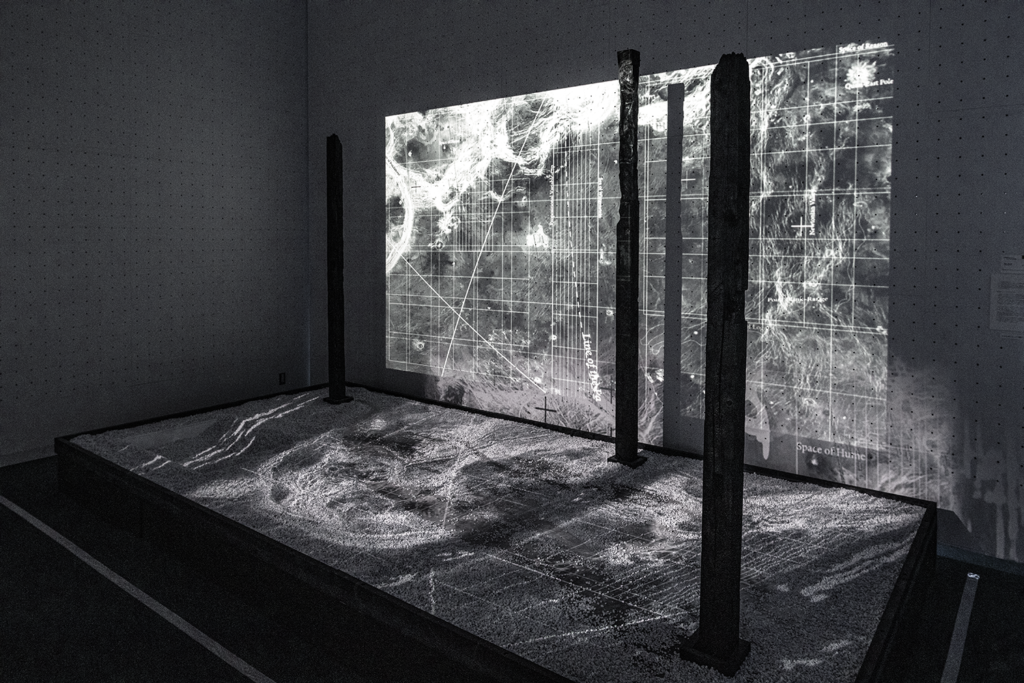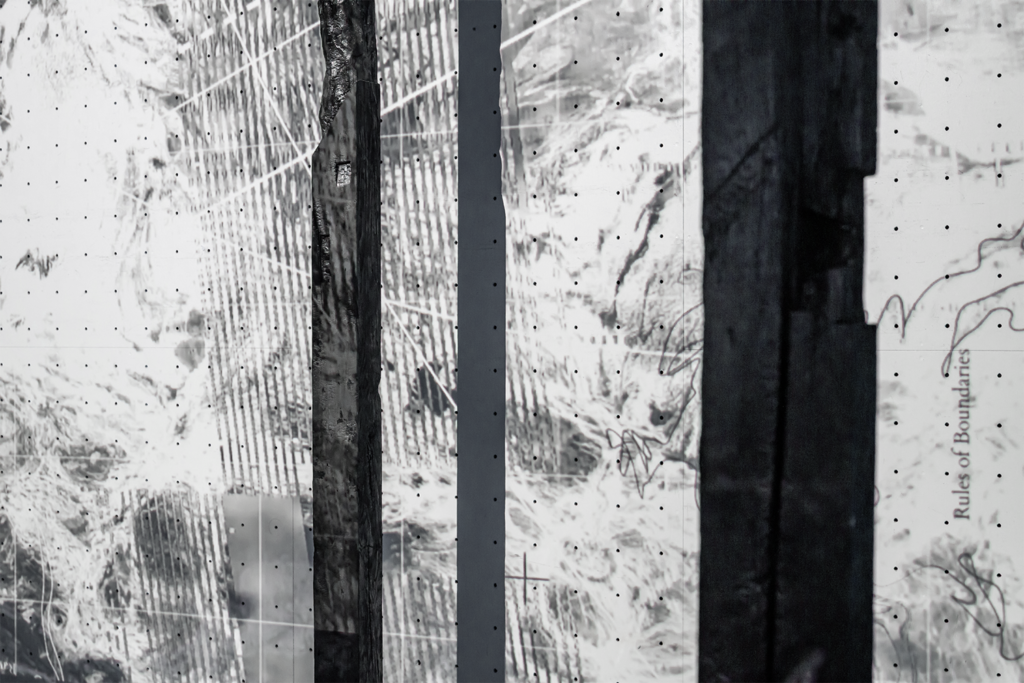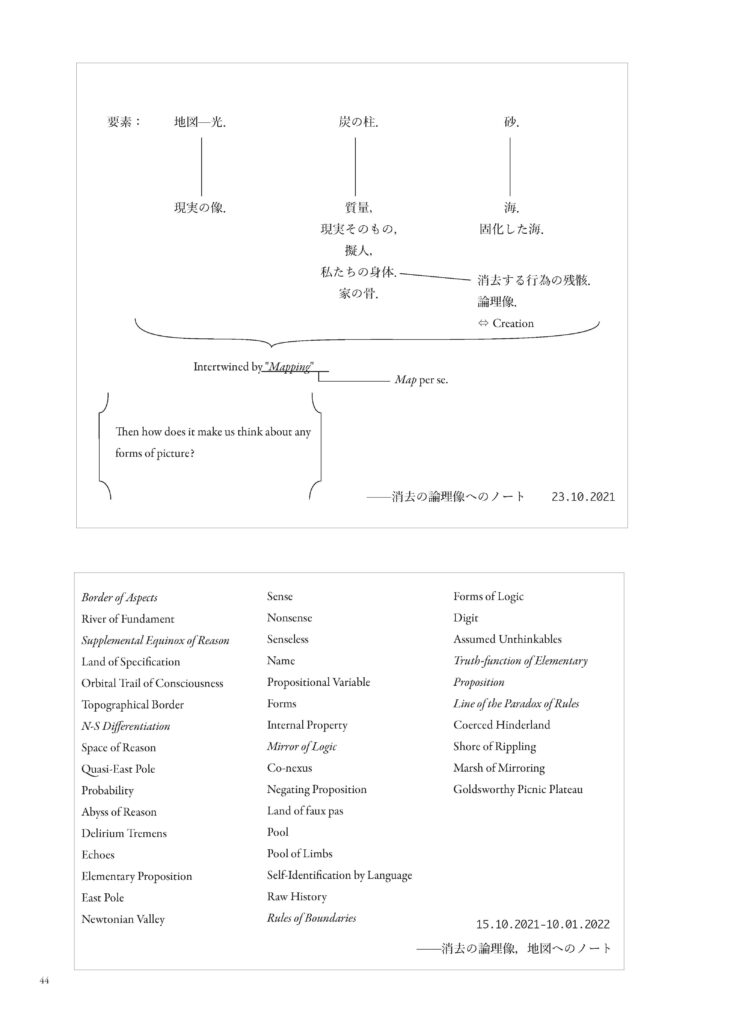Animortem of Pictorial Form: III. Logical Picture of Deletion
1. It describes a pictorial form
2. The picture cannot be a total bijection of Meaning. Hence it is different from mathematical mapping.
3. The pictorial form cannot be said, but only shown
4. the name of the substance is not an object by itself. It is separated from the phenomenon through interpretation.
5. Its logical picture defines the act of creation and drawing a map by picturing the act of erasure.
6. the elemental proposition of the image can be analyzed as a scene, not as a language
7. It actualises itself as it is
“Logical Picture of Deletion” is the third attempt in the series “Animortem of Pictorial Form” in which I use columns of charcoal. The term pictorial form is borrowed from “Tractatus Logico-Philosophicus” by Wittgenstein. Tractatus takes the form of a tidy memorandum: for each of the seven short thematic statements, several subordinate statements are arranged as explanations or supplements (the seven statements at the beginning are a parody of them).
He develops his theory around the idea that ‘propositions (sentences) are the pictures we create when we perceive the real world.’ The act of making them is called “mapping,” borrowed from mathematical terms, and the way in which the images are connected to the facts, the objects being mapped, is called “pictorial form.” His assertion was that we can talk about mappings, but we cannot talk about pictorial forms, only about what is shown to us.
The things that cannot be spoken of include logic, ethics, beauty, and death. There is no way to talk about these concepts but to show them, according to Wittgenstein.
But I want to reason about the unsayable.
About death.
About life.
About this thing that cannot be called beauty — this unearthly, ghostly something.
For that purpose, why don’t I burn the pillars of the wreckage of a house, turn them into charcoal, and set them straight up again – as a material that will disappear, but that will make myself? (The Japanese correspondence to “Animortem” in the title is taken from the description of the flames when Kinkaku-ji is getting burnt in Mishima Yukio’s The Temple of the Golden Pavilion.) What if I project a macroscopic map of the world at columns’ ground? This map includes a map of a particular city, my thought map superimposed on an aerial photograph of the surface of Venus, or a map of the universe.
Wouldn’t it be possible to see this state of affairs, where we are here and where we are making the picture, as a single, independent state of affairs? You experience what is happening here, you read it, and you make a picture of it. That is also a state of affairs. Such an act of creation is realised by the materials being erased.
Creation by erasure is being attempted here.


